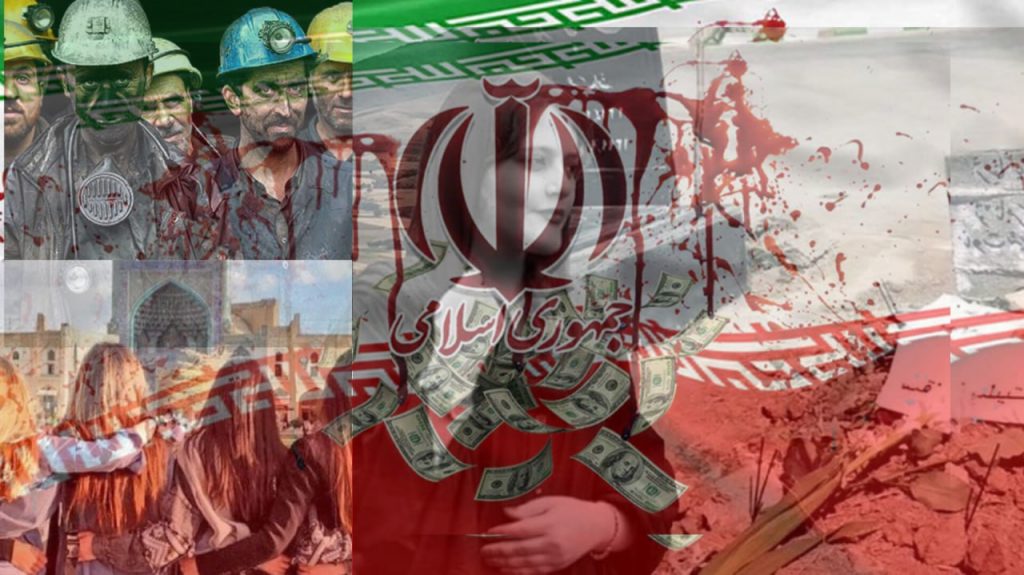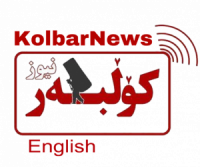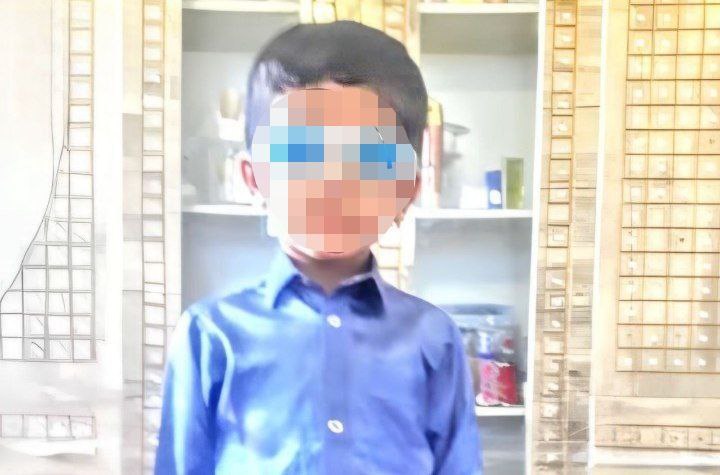
These days, social media is flooded with images of battles and confrontations between the regime’s agents and free and free-clothed women in the streets of Iranian cities, especially Tehran. These images show the brutality of the regime’s agents on one side, and the courageous resistance of the fighting women on the other. However, what we are witnessing now are not isolated incidents without context; they are rooted in the 45-year anti-people rule of this regime.
The Islamic regime of Iran is among the few political systems in today’s world that has turned almost all segments of society, all political beliefs, all national and religious minorities, and all social and civil groups into its opponents and enemies.
With the rise of the Islamic government over four decades ago, the initial suppression and massacre of supporters and participants of the royal regime began, killing whoever they could and confiscating their properties, while minor and major clerics became mansion dwellers overnight.
Kurdistan, Turkmen Sahra, Bandar Anzali, and communists were the second wave of terror and killings. They executed the leaders of the Turkmen Sahra people. Khomeini issued a jihad order against the people of Kurdistan. Forty years of massacre and suppression in Kurdistan still continue.
The imposition of deprivation on women became the identity and raison d’être of the Islamic government. Initially, it was mandatory hijab and efforts to confine them to homes, followed by the enactment of reactionary laws and the revocation of all previous achievements of women. This suppression continues in the face of unprecedented resistance from women, making the women’s struggle against the medieval and reactionary laws of the Islamic Republic, a full-fledged sexual apartheid, the regime’s Achilles’ heel.
National and religious minorities, especially Baha’is and Kurdish people, were targeted. The brutal suppression of the Kurdish people’s resistance was executed in the most savage ways. A full-scale project of physical and systematic elimination of Baha’is was carried out, even their cemeteries were not spared.
The massacre and suppression of communists continued relentlessly, later including supporters and followers of the People’s Mojahedin Organization, who had supported the Islamic government for a few years, culminating in the mass execution of thousands of political prisoners in 1988.
The regime, which came to power with promises of helping the “dispossessed,” plunged workers and laborers into unprecedented poverty and deprivation. Unemployment, inflation, lack of water and electricity, lack of suitable housing, and suppression of labor leaders were the gifts of the Islamic system to the millions of workers and laborers.
Universities were closed and Islamized, religious seminaries tightened their grip on universities and scientific and educational institutions. Hundreds of university professors were expelled, and thousands of students were blacklisted and deprived of education.
Dissenters, writers, poets, cinema and theater artists, and musicians faced crippling pressure from the censorship and inquisition apparatus, and women were eliminated from the field of singing.
Iran’s environment was pushed to the brink of destruction by the destructive policies and programs of the Islamic rulers, with environmental activists being assassinated, executed, or imprisoned on ridiculous charges of espionage.
Independent newspapers were shut down one after another, journalists were imprisoned or forced to emigrate. The crackdown extended to the virtual space and the internet, blocking five million websites.
Independent lawyers and human rights organizations were labeled as enemies of the regime, leading to the imprisonment, house arrest, or forced exile of a wave of human rights activists, legal entities, and honorable and freedom-loving lawyers.
Farmers, livestock breeders, small producers, and merchants whose work depended on the internet and stable currency value were driven to bankruptcy.
Retirees, who should have lived in security and respect, were turned into the poor and vulnerable segment of society, with millions facing psychological and material problems in their old age.
The spread of addiction and prostitution, which has become a major social issue affecting millions, is part of the tragedy of the Islamic government.
Domestically, no part of the country was spared. The eight-year Iran-Iraq war, the war against the people of Kurdistan, the killing of kolbars in Kurdistan and Sukhtbars in Balochistan, planting millions of mines in the western border areas, injuring and killing people in their work and living environments, and forcing over five million people to migrate from Iran, are a small part of the Islamic government’s record over the past four decades.
Externally, the export of terrorism, fueling civil wars in several countries, and initiating religious wars in the region, in continuation of the regime’s internal policies, have made life even more difficult for the people of Iran.
Conventional bourgeois governments generally strive to reduce dissatisfaction and thereby ensure their survival, but the Islamic regime, from the day it came to power until today, with the ongoing Women, Life, Freedom revolution, has continuously increased dissatisfaction. Today, only ten to fifteen percent of Iran’s population, who benefit from government perks, support the regime, while the rest of society either opposes or wants the downfall of the Islamic government.
Forty-five years of resistance and struggle by the Iranian people against the Islamic regime are leading to the regime’s downfall. People have rightly realized that the continuation of the Islamic government equates to hunger, unemployment, the deprivation of the most basic human rights, environmental destruction, and backwardness in all aspects of social life.

